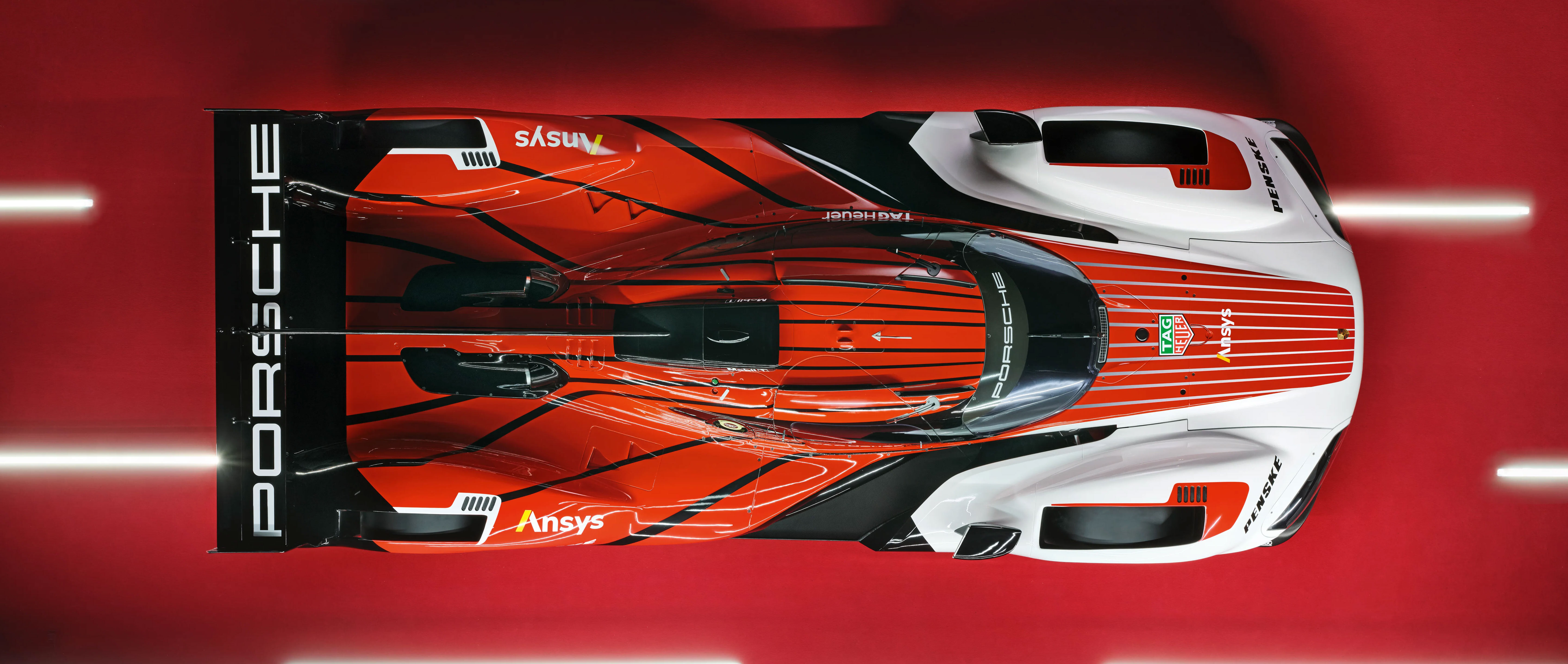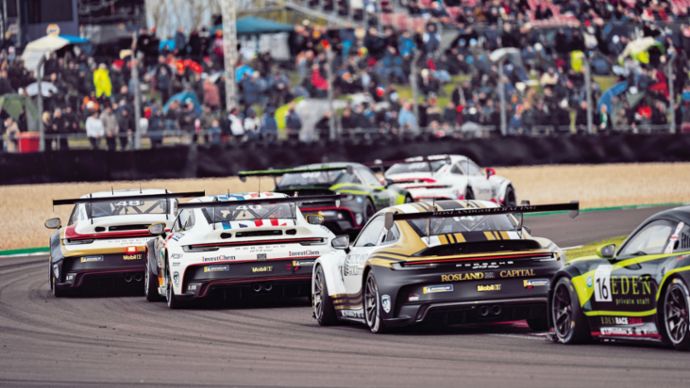Icons of Tomorrow
Numerous technical details were specially developed for it: the Porsche 963. And so this top player of the coming LMDh season is like a finger pointing from the future. Head of Motorsport Thomas Laudenbach explains the new endurance phenomenon from Weissach.
With barely a sound, the sports car prototype glides out of the pit in electric mode. 21, 22, 23 – and then the internal combustion engine kicks in with a voluminous V8 sound. Thomas Laudenbach listens eagerly as the rpm climb to over 8,000. “For me, this engine is like a good friend from back in the day,” says the 54-year-old Head of Porsche Motorsport, who took over from Fritz Enzinger in October 2021. During Enzinger’s tenure, Porsche secured three World Endurance Championship titles with the Porsche 919 Hybrid as well as its 17th, 18th, and 19th overall wins in Le Mans. “With the new LMDh 963, we’ve set our sights on the 20th overall win in France,” says Laudenbach, his goal ambitious. “We also want to win titles in the North American IMSA series and the World Endurance Championship.”
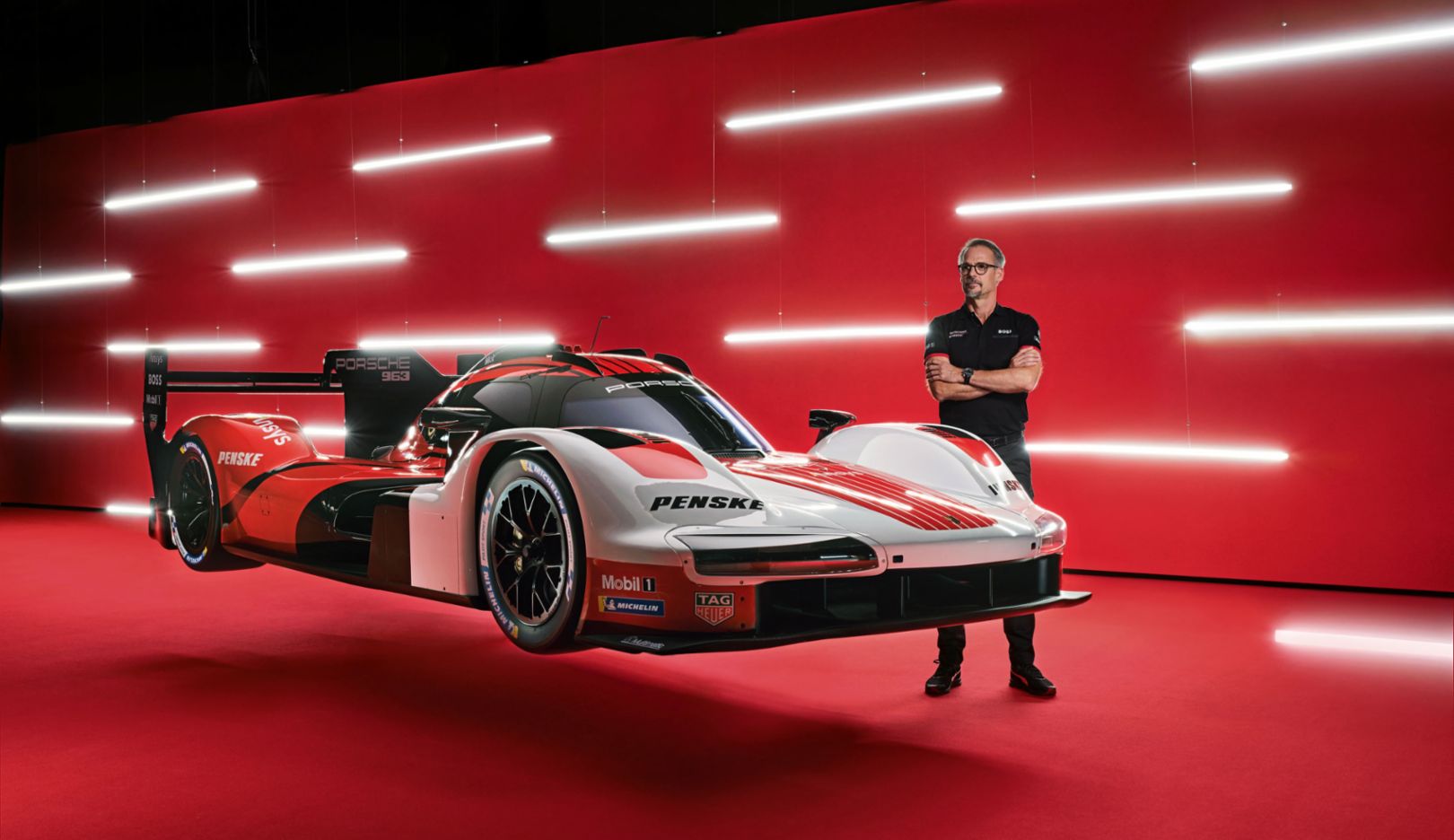
Lightweight:
The weight-optimized Porsche 963 appears to be floating in the photo. Thomas Laudenbach (54) prefers to keep his feet firmly on the ground. As the Head of Motorsport, he’s responsible for all motorsport activities and has several core areas of expertise, which include realistic assessments and traction.“This engine is like a good friend.”
Thomas Laudenbach
With the LMDh program, Porsche is returning to the top league of these championships to battle it out again for overall wins. The spectacular race car with a system output of around 500 kW (680 PS) will make its debut at 24 Hours of Daytona in January 2023. The competition is fierce, as Acura, BMW, and Cadillac have also developed LMDh race cars for the new prototype class of the IMSA WeatherTech SportsCar Championship. The abbreviation LMDh stands for Le Mans Daytona hybrid. The group of Le Mans Hypercars (LMHs), which includes Ferrari, Glickenhaus, Peugeot, and Toyota, will also compete in the FIA World Endurance Championship (WEC).
The fact that it’s even possible for Porsche to participate in the IMSA series and the WEC with the same car is all down to a past agreement. On January 24, 2020, three associations announced a new set of rules: Le Mans organizer Automobile Club de l’Ouest (ACO), Fédération Internationale de l’Automobile (FIA), and the US American International Motor Sports Association (IMSA). The shared goal is to increase power density with as many prototypes as possible and a complex set of rules that prevent skyrocketing costs. How do you go about doing that?
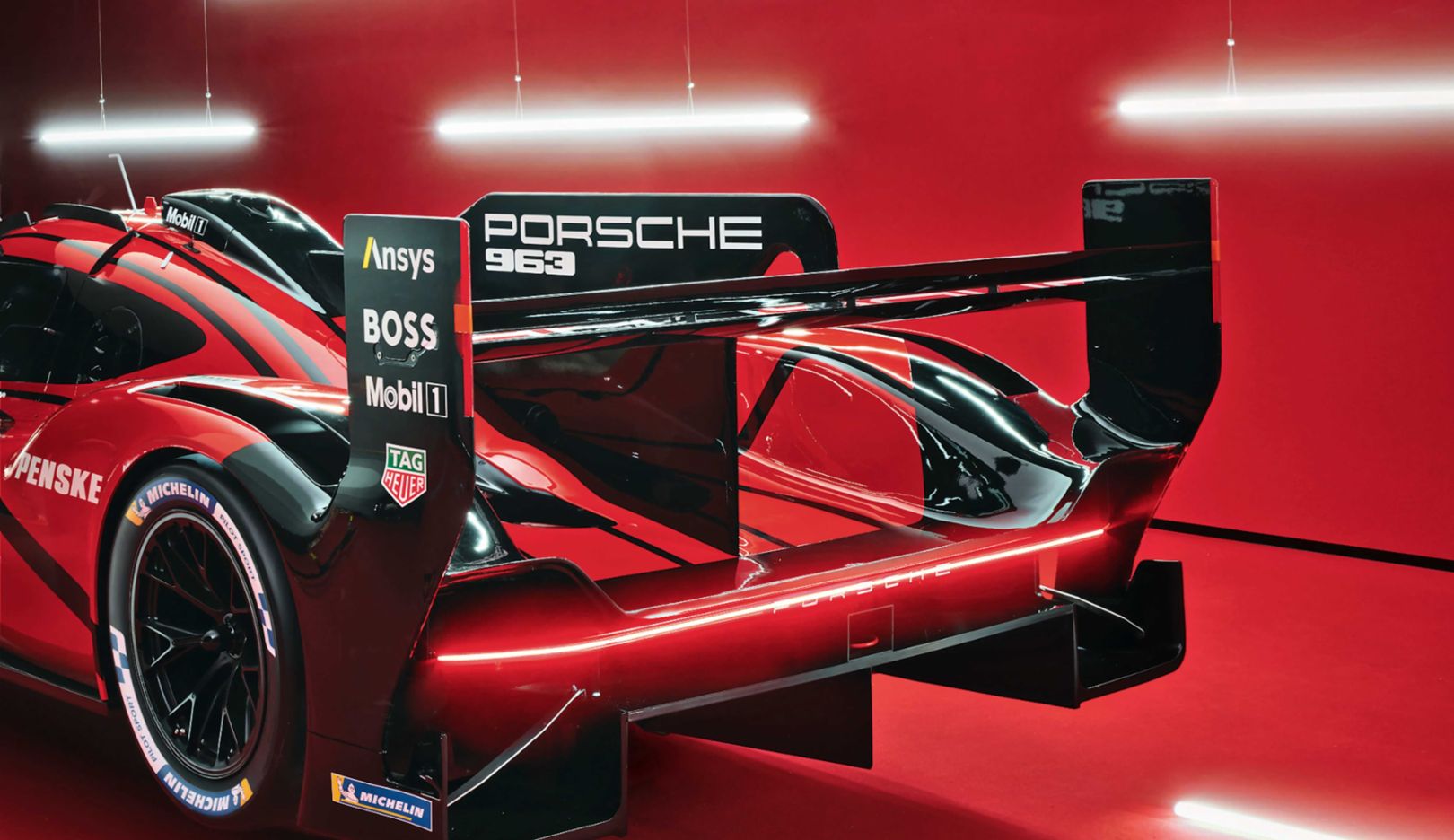
Light strip:
Drivers can see who’s in front of them. The light strip is integrated at the rear, with the letters of the brand name shining below.Balance of performance
To start with, by introducing the first-ever dynamic regulations in the top category of this sport. A balance of performance (BoP) like this, which allows the organizers to take technical measures when a single vehicle maintains superiority over an extended period of time, has only ever existed in near-standard GT classes. “Due to this BoP, excessive investments in increased performance are no longer necessarily worthwhile,” explains Laudenbach. Additional weight or other restrictions would cancel out enhanced performance resulting from many hours in the wind tunnel or sophisticated electronics.
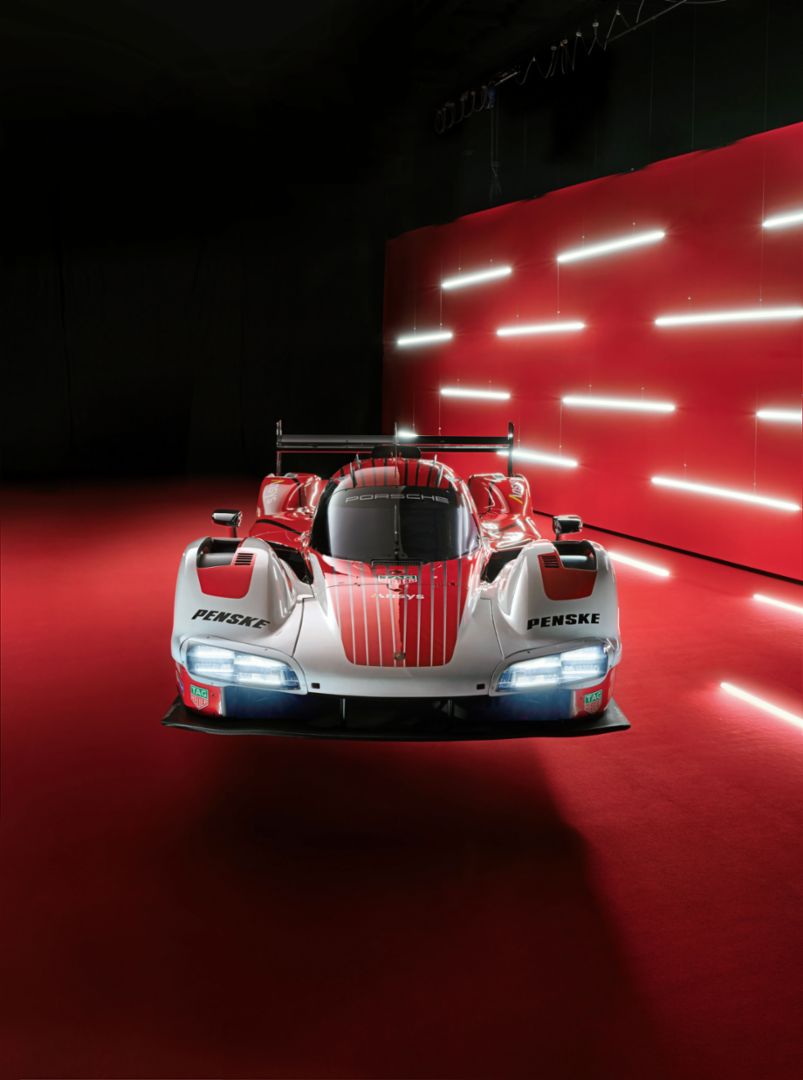
Light:
The headlights are low and narrow, which is unusual for illumination on a racecourse at night, when every millisecond counts and speeds can reach up to 340 kmh. But the eyes provide a look at the series design. The motorsport experts made the Style Porsche design suitable for racing with the installation and alignment of 64 LED lights.The second key factor in keeping costs low is base components that are excluded from development from the very start. As a result, all LMDh vehicles have the same Xtrac seven-speed motorsport transmission and hybrid system, including the Bosch electronic control unit and the Williams Advanced Engineering battery. Michelin supplies standardized tires. The associations approved four chassis manufacturers for the monocoque and chassis: Dallara, Ligier, ORECA, and Multimatic. Porsche is both the first and the exclusive partner of Multimatic, and was the first manufacturer to test the hybrid system and tires. “In this leading role, we’re paving the way for our competitors,” says Laudenbach, who is a mechanical engineer. “But we also benefit from a steep learning curve in collaboration with the international partners. And in the areas that are most important to us, we’re independent, of course,” he adds, glancing at the engine.
Twin-turbo V8
The LMDh regulations do not restrict displacement, design, or the number of cylinders in the internal combustion engine. Laudenbach and his engineers chose an old, familiar engine to be the basis for Porsche’s return to the top class. In his early days with Porsche, between 1998 and 2013, Laudenbach was responsible for the drive in the LMP2 RS Spyder race car, which served as the basis for use in the 918 Spyder. “Motorsport is already in the genes of its V8 cylinder. The low position of the crankshaft, in particular, allows you to optimize the race car’s center of gravity,” he says enthusiastically. “The dry sump lubrication was already designed for high lateral acceleration in the 918. If you consider the degree of freedom in the regulations – for example, when it comes to minimum weight and performance – this 4.6-liter engine offers an outstanding basis for an LMDh drive.”
Of course, that’s not to say that a ten-year-old engine is pulled off the shelf and installed in a world-class race car in Weissach. “Alongside some general fine-tuning, there are also three fundamental changes,” Laudenbach adds. “First of all, the V8 in the 963 also acts as a load-bearing structural element in the vehicle. Second, we designed it for use with renewable fuels. And third, the former naturally aspirated engine now features two powerful turbochargers. Being able to vary boost pressure provides us with flexibility when we need to respond to BoP adjustments.”
“We want to win titles.”
Thomas Laudenbach
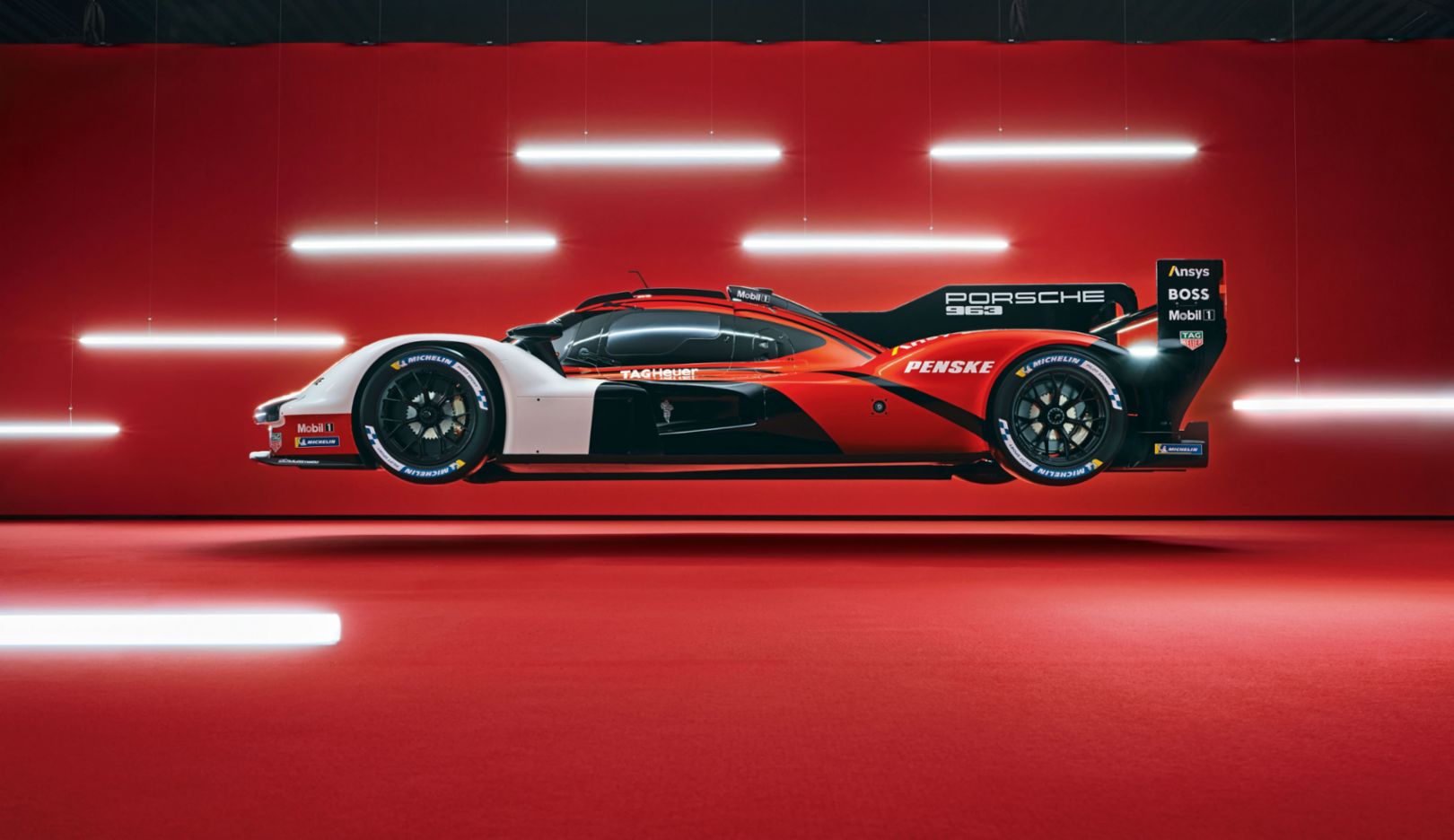
Lines:
According to the regulations, the aerodynamics of new LMDh race cars must remain within strictly defined limits. Porsche translated the stringent rules into a design opportunity for the 963 and fulfilled them in partnership with Style Porsche. Grant Larson integrated the typical flyline and forward-looking details for series sports cars.LMDh engine regulations put a stop to big investments in increased performance. The maximum system output provided by the hybrid system and internal combustion engine – 515 kW (700 PS) – applies to all LMDh competitors. And output must develop along the prescribed curve throughout the entire rev range. Power is measured at the rear axle – all-wheel drive is not permitted. “The same characteristics are therefore prescribed for all of the engines,” Laudenbach explains. “It’s much the same with aerodynamics. Our drag and downforce must remain within a defined window at all times.”
What it all comes down to
The framework of rigid rules made development all the more difficult. Fulfilling them is one thing, and ensuring reliability is another – and a basic requirement for success. To outperform its competitors, Porsche Penske Motorsport focused on other key development attributes. “Some of the most important elements in the vehicle specifications were perfect balance and drivability in all conditions, whether with a full or empty tank, with new or used tires,” Laudenbach explains. “We don’t need a ‘top’ car. It just needs to be consistently fast because that’s what allows you to win races and championships in series with BoP. In addition, ease of use for the driver – especially in changing weather conditions – and outstanding serviceability for the Porsche Penske Motorsport pit crew were important to us.”
These will all be crucial competition factors when Porsche battles it out again for overall wins in a matter of weeks. The Porsche 963 already deserves a trophy for aesthetics.
